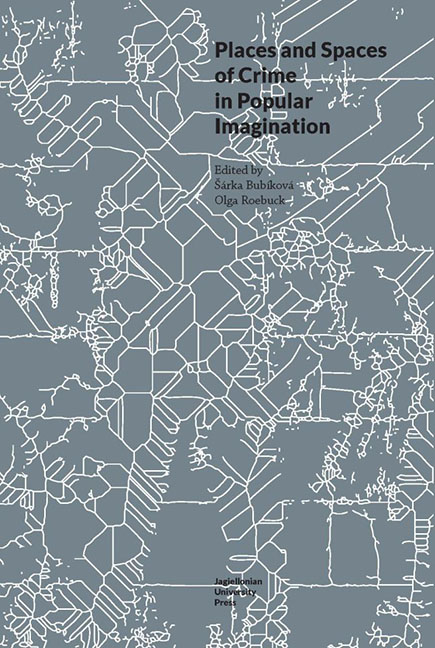Book contents
- Frontmatter
- Contents
- Introduction
- London in the Cormoran Strike Series
- London as the Murderer’s Playground in Sharon Bolton’s Now You See Me
- Through the Looking-Glass: Space and Place in Simon Mawer’s The Girl Who Fell from the Sky
- Murderous Academics: Territoriality in Cynthia Kuhn’s Academic Mysteries
- Suburbia and the Subversion of Its Values in 1950s Crime Comics
- Wilderness in Dana Stabenow’s and Nevada Barr’s Crime Fiction Series
- “I Am the Wave that Sinks into the Ocean”: The Sense of Place in The Affair
- Index
- Notes on the Contributors
London as the Murderer’s Playground in Sharon Bolton’s Now You See Me
Published online by Cambridge University Press: 13 October 2023
- Frontmatter
- Contents
- Introduction
- London in the Cormoran Strike Series
- London as the Murderer’s Playground in Sharon Bolton’s Now You See Me
- Through the Looking-Glass: Space and Place in Simon Mawer’s The Girl Who Fell from the Sky
- Murderous Academics: Territoriality in Cynthia Kuhn’s Academic Mysteries
- Suburbia and the Subversion of Its Values in 1950s Crime Comics
- Wilderness in Dana Stabenow’s and Nevada Barr’s Crime Fiction Series
- “I Am the Wave that Sinks into the Ocean”: The Sense of Place in The Affair
- Index
- Notes on the Contributors
Summary
The Phenomenon of Jack the Ripper – The Birth
In City of Dreadful Delight: Narratives of Sexual Danger in Late-Victorian London, Judith Walkowitz evokes the words of social reformer Octavia Hill, describing the social situation in the Victorian Era. Although, undoubtedly, Queen Victoria’s reign brought great prosperity due to the mechanization of the workforce and a rapid expansion of cities, among other things, the deteriorating living conditions in the most impoverished districts of London cannot have been left unnoticed. As Hill contends, “one feels as if one might meet violence any where” (Walkowitz 1992: 29) – overpopulation due to a flux of villagers to cities in search of a better life was amongst the most crucial factors contributing to a rapid growth of the crime rate. Consequently, particular districts in London were perceived as spaces of poverty, crime, peril; as no-go areas which more affluent urbanites avoided at all costs. To some extent, in their specificity, these parts of the Victorian city may be read as peculiar heterotopias – a conventionally islanded space of crime – defined by pejorative connotations, where the growth of welfare was replaced with the rise in impoverishment and criminality. These areas imbued with negative connotations were willingly represented in literature by writers from this period, especially by Charles Dickens.
The picture of the criminal face of Victorian London would be incomplete without referring to Jack the Ripper, the serial killer associated with one specific district, who is the leitmotif of this essay. In 1888, the anonymous murderer terrorised the East End that “took on the burden of mystery and criminality. It was the East that was seen as the harbinger of death and decay” (Ackroyd 2008: 12). Further delineating the inner division of London, Peter Ackroyd postulates that
[t]he West End became the centre of luxury and of conspicuous consumption. The western neighbourhoods were laid out in fashionable squares and avenues. Here grew up Mayfair and Belgravia, Knightsbridge and Chelsea. In the East lay Spitalfields and Whitechapel and Wapping, all of them bywords for corruption and criminality. (Ackroyd 2008: 18)
Hence, Jack the Ripper with his inexhaustible cravings for killing prostitutes seems a notable addition to this infamous district of immorality and degeneracy.
- Type
- Chapter
- Information
- Places and Spaces of Crime in Popular Imagination , pp. 27 - 46Publisher: Jagiellonian University PressPrint publication year: 2021



